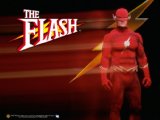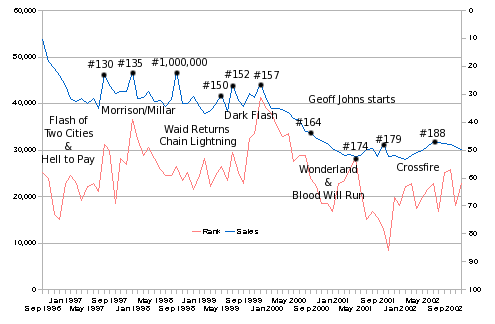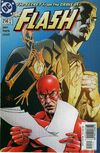 This week’s Permanent Damage at CBR brings up the issue of maximizing profits, and just what that means in today’s comic-book marketplace. At one point, Stephen Grant mentions:
This week’s Permanent Damage at CBR brings up the issue of maximizing profits, and just what that means in today’s comic-book marketplace. At one point, Stephen Grant mentions:
As far as I know, Geoff Johns wasn’t thrown off The Flash. He left the book. There was no indication that Wally West… pardon me… had legs left, and it’s not like sales had been going up and up and up under Geoff either. Just not that many people are interested in The Flash.
While the first part is true, the second part is incorrect. Sales had been going up under Geoff Johns. When he came on board In the middle of his run, the series was selling in the 20,000-30,000 range. After a few years, around #200, it started climbing steadily until it actually broke 50,000 with his final issue, #225. [Edit: I’ve found some earlier sales figures that cover the Waid-to-Johns transition, and got some surprises.]
I’ve compiled the following sales chart from posts at The Beat over the last few years:
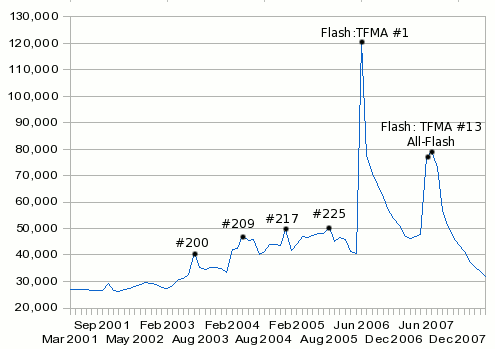
Some Highlights:
#200 is the conclusion of Blitz, and being a milestone issue, it’s not surprising to see a spike. Cameo guest spots by Hal Jordan and Barry Allen probably helped as well.
#209 guest-stars the Justice League and features a race with Superman.
#214-216 is the Identity Crisis tie-in, “The Secret of Barry Allen.” #217 is also billed as a tie-in, and features the funeral for Captain Boomerang.
#225 is the conclusion of “Rogue War” and Geoff Johns’ final issue on the series. Notice the brief dip for the following issue, which is a fill-in, then a hasty drop over the final 4-issue arc of the series.
Both relaunches show huge spikes followed by dramatic dives as people tried them out, then decided no, this wasn’t what they wanted to read. And the second spike was only half the height of the first. Interestingly, current numbers are actually higher that they were early in Geoff Johns’ run (though the precipitous slope suggests they won’t be for long, unless people have responded favorably to the middle issues of Tom Peyer’s arc).
I’ve been of the opinion that another relaunch would further damage the book — but it might be necessary just to get people to look at it. Sales charts for a healthy book do show attrition, with occasional jumps like those shown on the left side of this graph, but DC may want that quick injection of readers. The trick, of course, is going to be figuring out what will resonate with readers and get them to stay after they pick it up, instead of dropping it again once curiosity is satisfied.
The actual data, compiled from The Beat’s sales charts, follows after the cut. Continue reading →
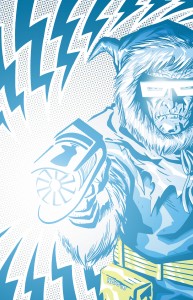 Newsarama has posted a 5-page preview of Final Crisis: Rogues’ Revenge #1, due in stores on Wednesday.
Newsarama has posted a 5-page preview of Final Crisis: Rogues’ Revenge #1, due in stores on Wednesday.
